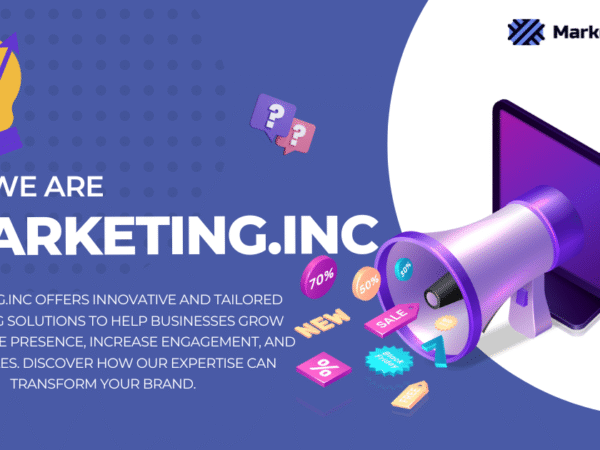Are you a startup or an entrepreneur looking to launch your product quickly and without spending too much? You’ve probably considered in-house development but have wondered if outsourcing MVP is the better option. It sure can be! Outsource MVP offers startup options that come with lesser risks, smaller investments, faster speed-to-market, and access to a broader skill set than in-house development. In this blog post, we’ll look at why outsourcing MVP is often the best choice for founders wanting great results on tight budgets.
What is an MVP and why is it Essential in Product Development?
In the ever-evolving landscape of product development, the Minimum Viable Product (MVP) emerges as a beacon of simplicity amid the chaos of ideas and features. Unlike a mere stripped-down version, an MVP represents the core features essential for a product’s success. This approach not only saves valuable time and resources but also facilitates quicker user feedback, guiding future development and ensuring a more impactful market launch.
Cost-Effectiveness: Redefining Budget Efficiency
Outsourcing your MVP proves to be a cost-effective alternative to in-house development. By sidestepping recruitment, training, salaries, benefits, and infrastructure costs, outsourcing allows you to pay for specific services or development hours, significantly reducing overhead expenses.
Access to Expertise: Tapping into Specialized Skills
Outsourcing provides access to a rich pool of skilled professionals or specialized agencies with expertise in MVP development. These external teams, seasoned in diverse projects, offer valuable insights and guidance, accelerating development processes and elevating the overall quality of your MVP.
Faster Time to Market: Agile Development in Action
Outsourcing MVP development aligns seamlessly with Agile methodologies. External teams, well-versed in streamlined processes, can rapidly scale up development, allocate dedicated resources, and ensure timely delivery of the MVP.
Scalability and Flexibility: Adapting to Project Dynamics
One of the key advantages of outsourcing is the flexibility to scale your development team based on project requirements. This adaptability allows for optimal resource allocation, avoiding the challenges of in-house team expansion or contraction.
Reduced Management Burden: Streamlining Project Oversight
Effective project management is critical for MVP success. Outsourcing enables the offloading of management responsibilities to external teams, freeing up internal resources to concentrate on core business activities.
Focus on Core Competencies: Enhancing Business Efficiency
Outsourcing MVP development empowers internal teams to concentrate on core competencies such as marketing and sales. This strategic focus optimizes resource allocation, enhancing overall business efficiency.
Risk Mitigation: Drawing from External Experience
Outsourcing your MVP can help mitigate certain risks associated with technology and market uncertainties. External teams often have experience in handling similar projects and can provide insights into potential pitfalls, technical challenges, and market demands. Their expertise can help you make informed decisions and reduce the risk of costly mistakes.
What are the essential steps to consider while outsourcing an MVP?
When venturing into the realm of outsourcing an MVP, several crucial steps demand careful consideration. First and foremost, defining the MVP lays the foundation for success, identifying core functionality, target audience, and key success metrics. The strategic selection of an outsourcing partner involves thorough research, evaluating expertise, portfolio, and cultural fit. A detailed project scope becomes a blueprint, guiding objectives, requirements, and constraints.
Clear communication channels, established project milestones, and a comprehensive legal agreement ensure seamless collaboration. Iterative development, progress monitoring, and quality assurance are essential for maintaining alignment with expectations. The deployment and launch of the MVP demand collaboration and thorough testing for a successful market entry. Continuous evaluation, user feedback analysis, and subsequent iterations complete the journey toward a thriving MVP.
-
Define Your MVP: Clearly articulate the core functionality and features of your MVP. Identify the problem it solves, the target audience, and key metrics for success.
-
Identify the right outsourcing partner: Research and evaluate potential outsourcing partners. Consider factors such as their expertise, experience, portfolio, reputation, cost, and cultural fit. Request proposals and conduct interviews to select the most suitable partner for your project.
-
Draft a detailed project scope:Prepare a comprehensive project scope document that outlines the objectives, requirements, and constraints of your MVP. Include technical specifications, user stories, wireframes, and any other relevant documentation. This will serve as a reference point for the outsourcing team.
- Establish clear communication channels: Define communication channels and establish regular communication protocols with the outsourcing team. Decide on the preferred methods of communication (e.g., email, video calls, project management tools) and frequency of updates or progress reports.
- Set project milestones and timeline: Work with the outsourcing team to establish a project timeline and define critical milestones. Break down the development process into manageable phases and allocate specific deadlines for each milestone. This will help track progress and ensure timely delivery.
- Create a legal agreement: Prepare a comprehensive contract or service agreement that clearly outlines the scope of work, project timeline, deliverables, payment terms, intellectual property rights, confidentiality provisions, and dispute resolution mechanisms. Consult with legal professionals to ensure the agreement protects your interests.
- Provide necessary project assets: Share any existing assets, such as brand guidelines, design files, or APIs, with the outsourcing team. These assets will help them align the MVP development with your brand identity and any existing infrastructure.
- Establish an iterative development process: Embrace an agile development approach, such as Scrum or Kanban, to ensure flexibility and adaptability throughout the project. Define sprints, hold regular sprint planning and review meetings, and encourage continuous feedback and collaboration.
- Monitor progress and provide feedback: Regularly review the work delivered by the outsourcing team against the agreed-upon milestones. Provide prompt feedback and address any concerns or questions promptly. Maintain an open line of communication to ensure the development aligns with your expectations.
- Conduct quality assurance and testing: Implement a robust quality assurance process to ensure the MVP meets the required standards. Define testing criteria, perform functional and usability testing, and address any bugs or issues promptly.
- Deploy and launch the MVP: Collaborate with the outsourcing team to deploy the MVP to the intended environment, whether it’s a web server, app store, or other platforms. Test the deployment thoroughly to ensure a smooth launch.
- Evaluate and iterate: Once the MVP is live, gather user feedback and analyze key performance indicators. Use this feedback to identify areas for improvement and plan subsequent iterations or feature enhancements.
Realizing Success through Case Studies
Explore concrete examples sheds light on the transformative impact of outsourcing MVP development, showcasing its strategic advantages.
-
Airbnb: Revolutionizing Travel through Strategic Outsourcing:
Airbnb’s success story lies in outsourcing its marketplace development. Partnering with a third-party team allowed them to focus on core business aspects, resulting in a ground-breaking launch that transformed the travel industry.
-
Skype: Expanding Reach with Outsourced App Development
Skype outsourced its Android and iOS applications, expanding its user base and enhancing customer satisfaction. Outsourcing enabled effective resource allocation, contributing to Skype’s app becoming reliable and user-friendly.
-
Slack: A Communication Platform that Outsourced its Initial Development.
This allowed the in-house team to focus on refining the user experience and optimizing the platform’s functionality. The outcome was a highly intuitive and collaborative tool that quickly
-
GitHub: Outsourced Specific Development Tasks to Efficiently Scale its Platform
By utilizing external expertise, GitHub was able to streamline its processes, enhance feature development, and achieve a remarkable level of scalability.
These case studies underscore how outsourcing can contribute to resource optimization and the creation of reliable, user-friendly products, ultimately shaping the success of businesses in dynamic industries.
Conclusion:
Developing an MVP through outsourcing demands strategic planning and adherence to best practices. By understanding critical aspects such as budget determination, team identification, collaboration with developers, IP rights protection, and thorough testing, businesses can position themselves for long-term success. The upfront work involved in outsourcing an MVP, when done correctly, yields substantial benefits down the road. Embrace the strategic approach, and witness how outsourcing your MVP can be the catalyst for acquiring the resources necessary for product success.
Creating a Minimum Viable Product is pivotal for your business success. Our experienced team can guide you through the entire process, from ideation to launch. Contact us today to make your MVP a reality, ensuring a smooth and successful journey toward achieving your business goals.








